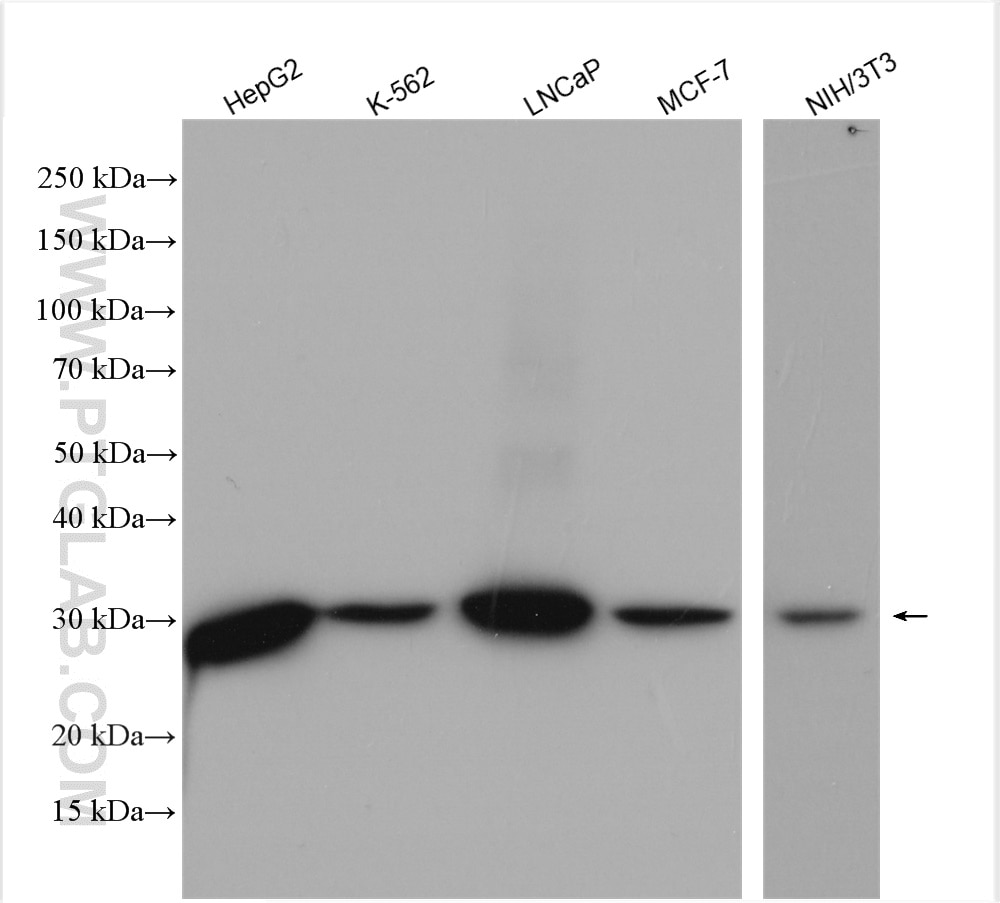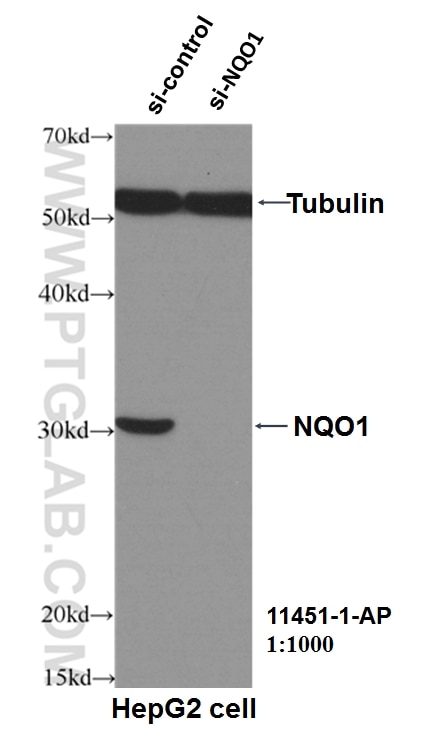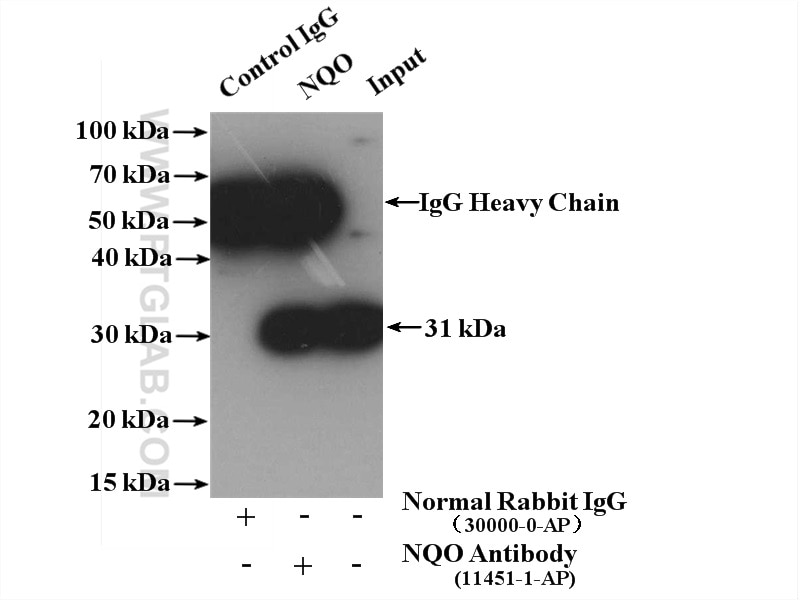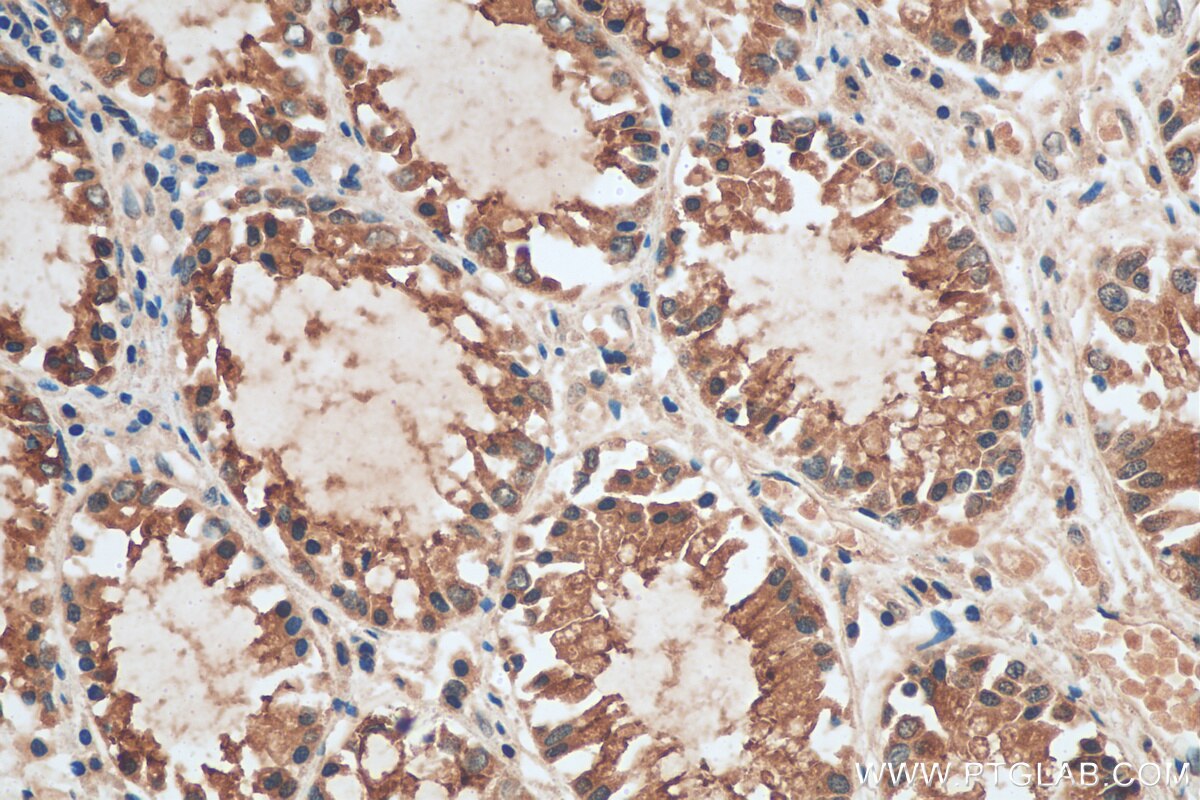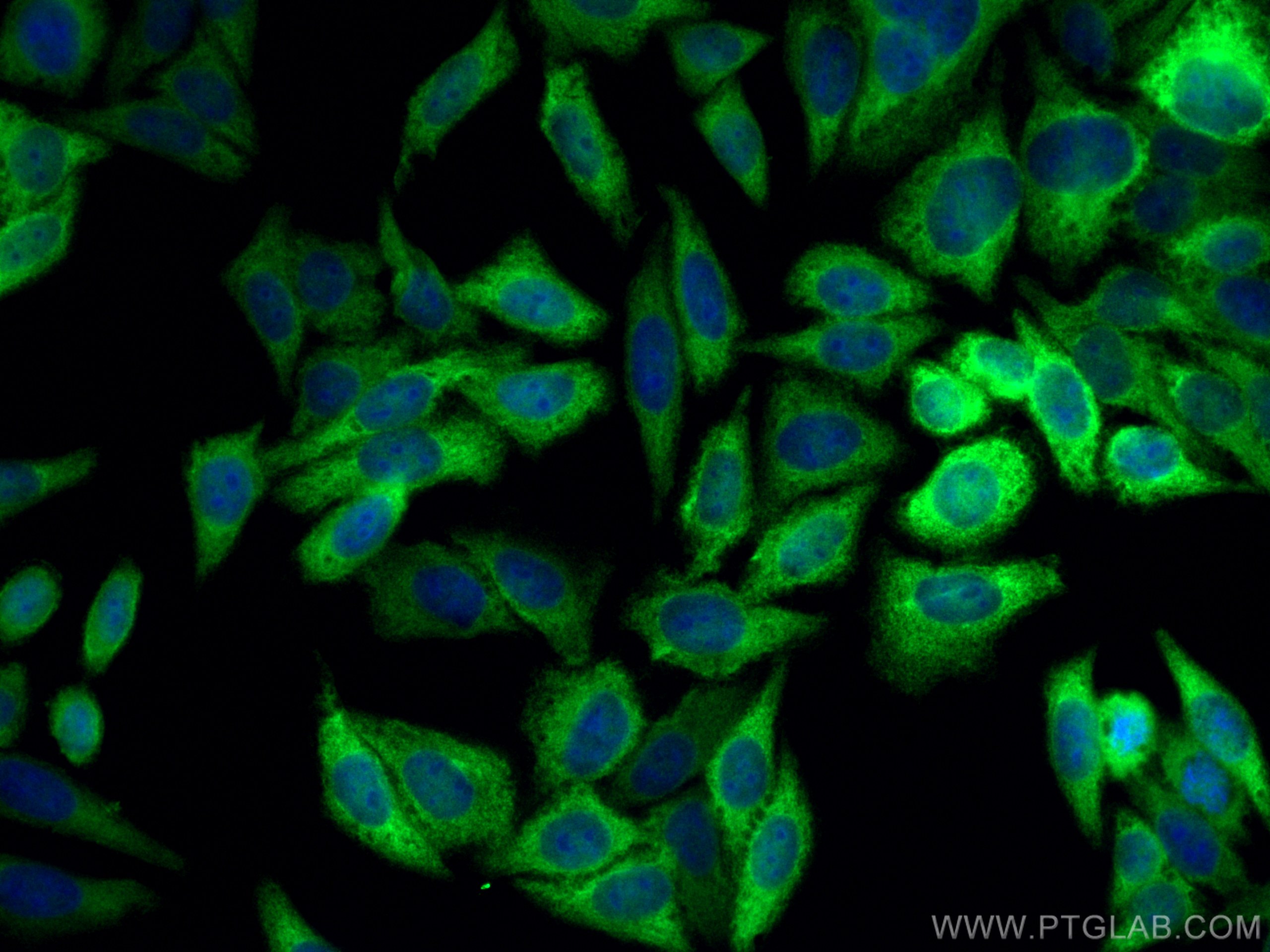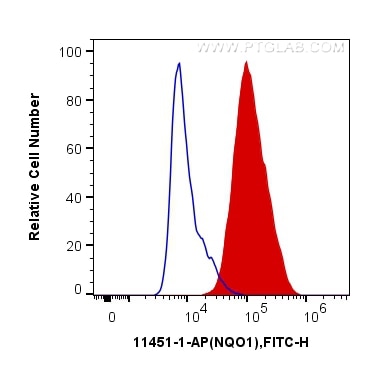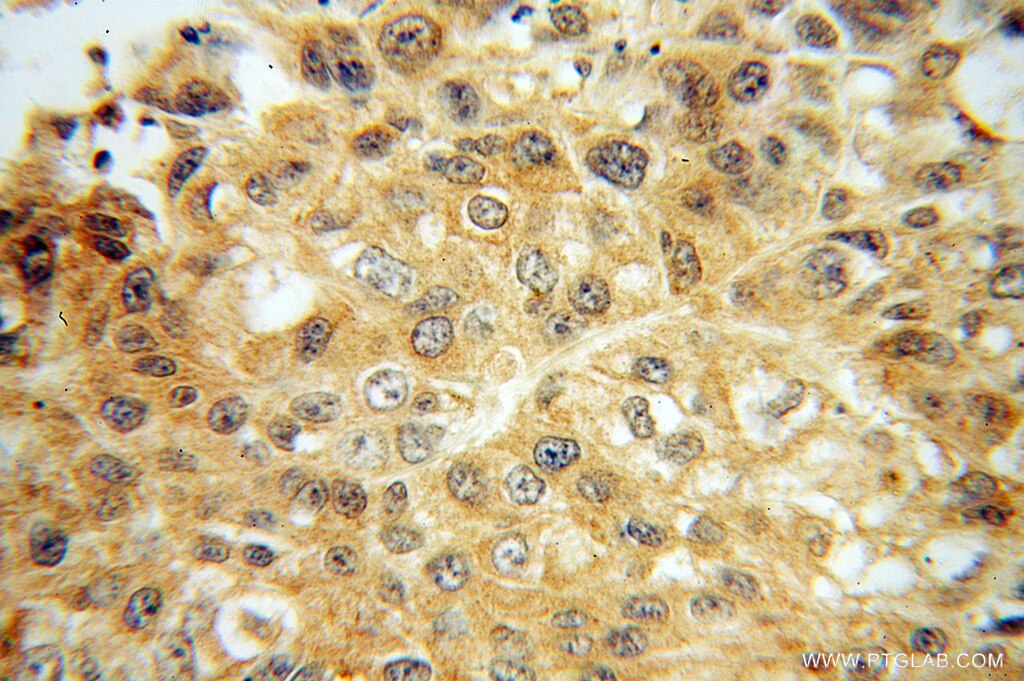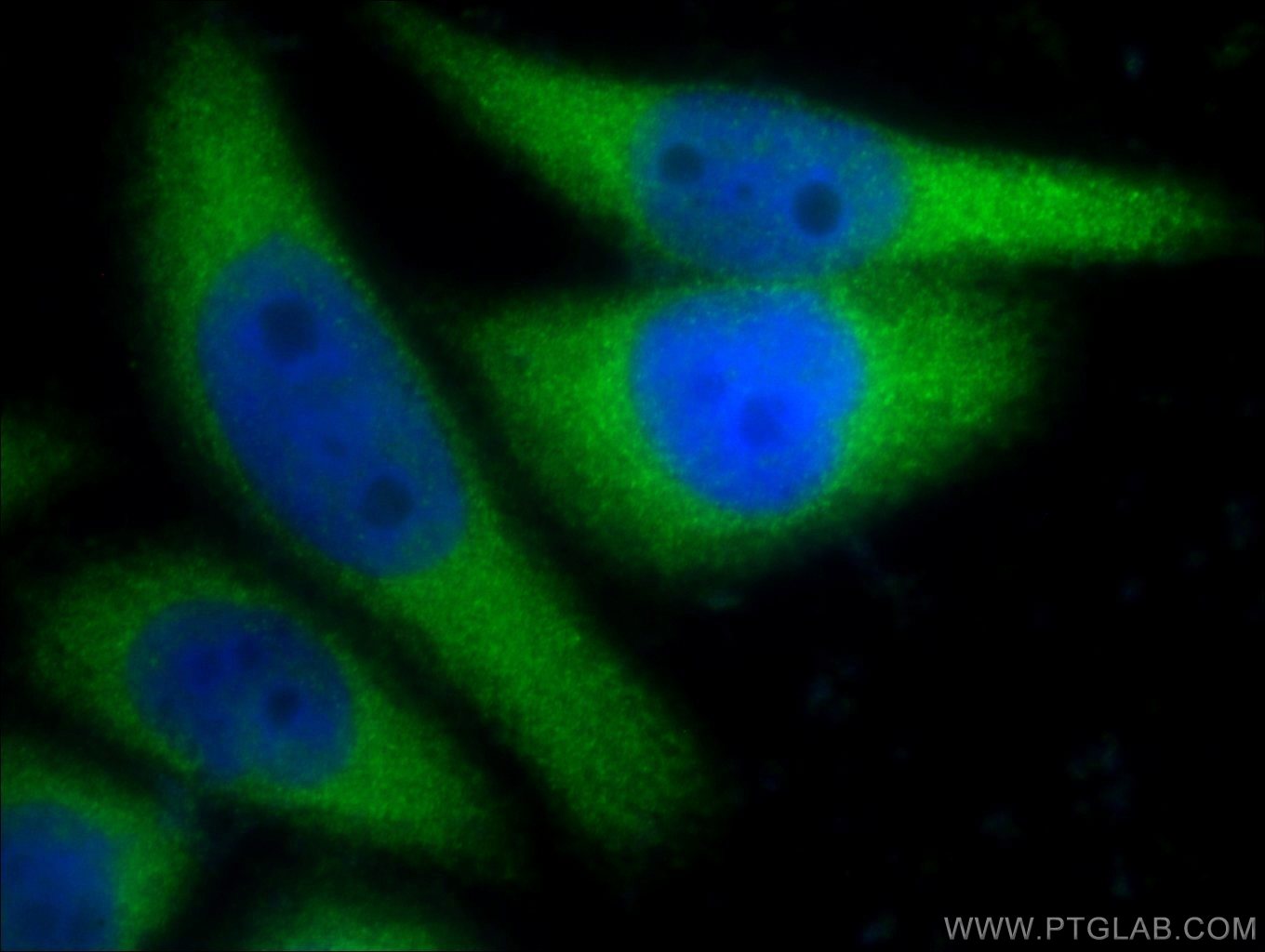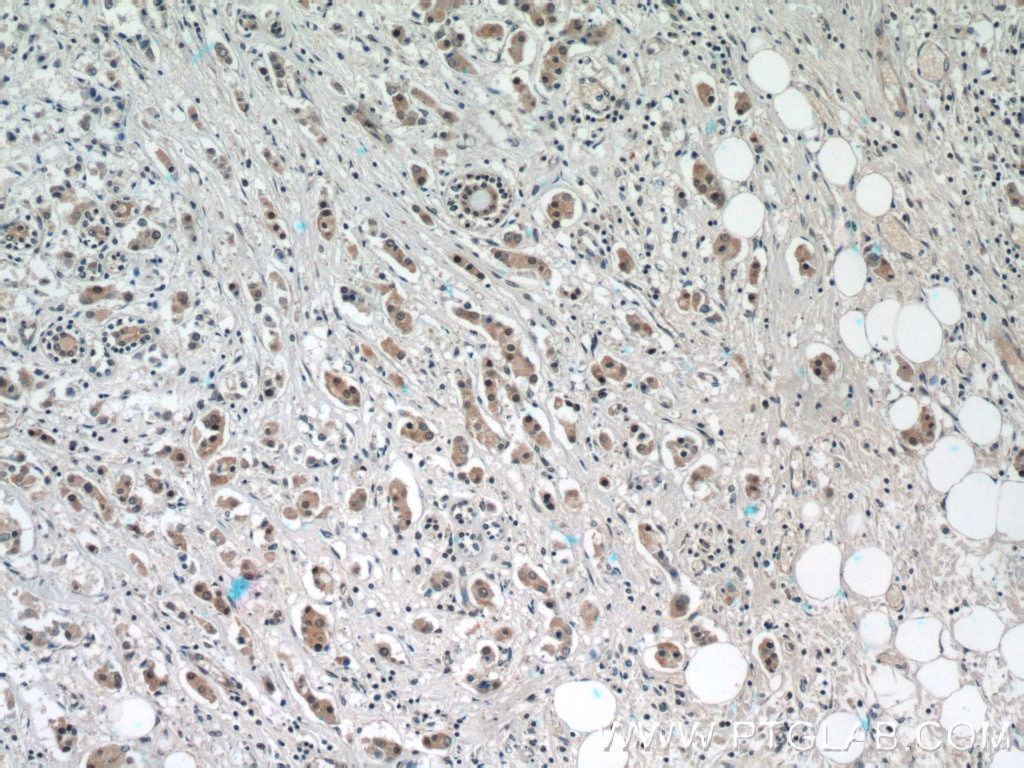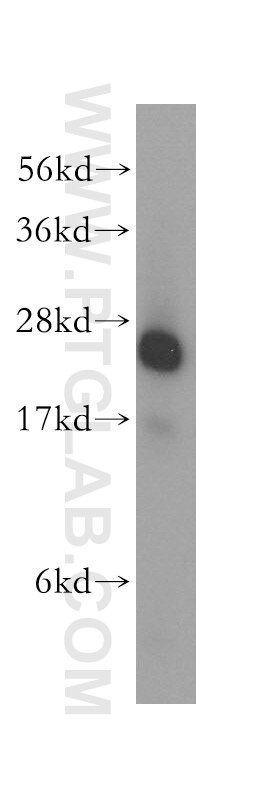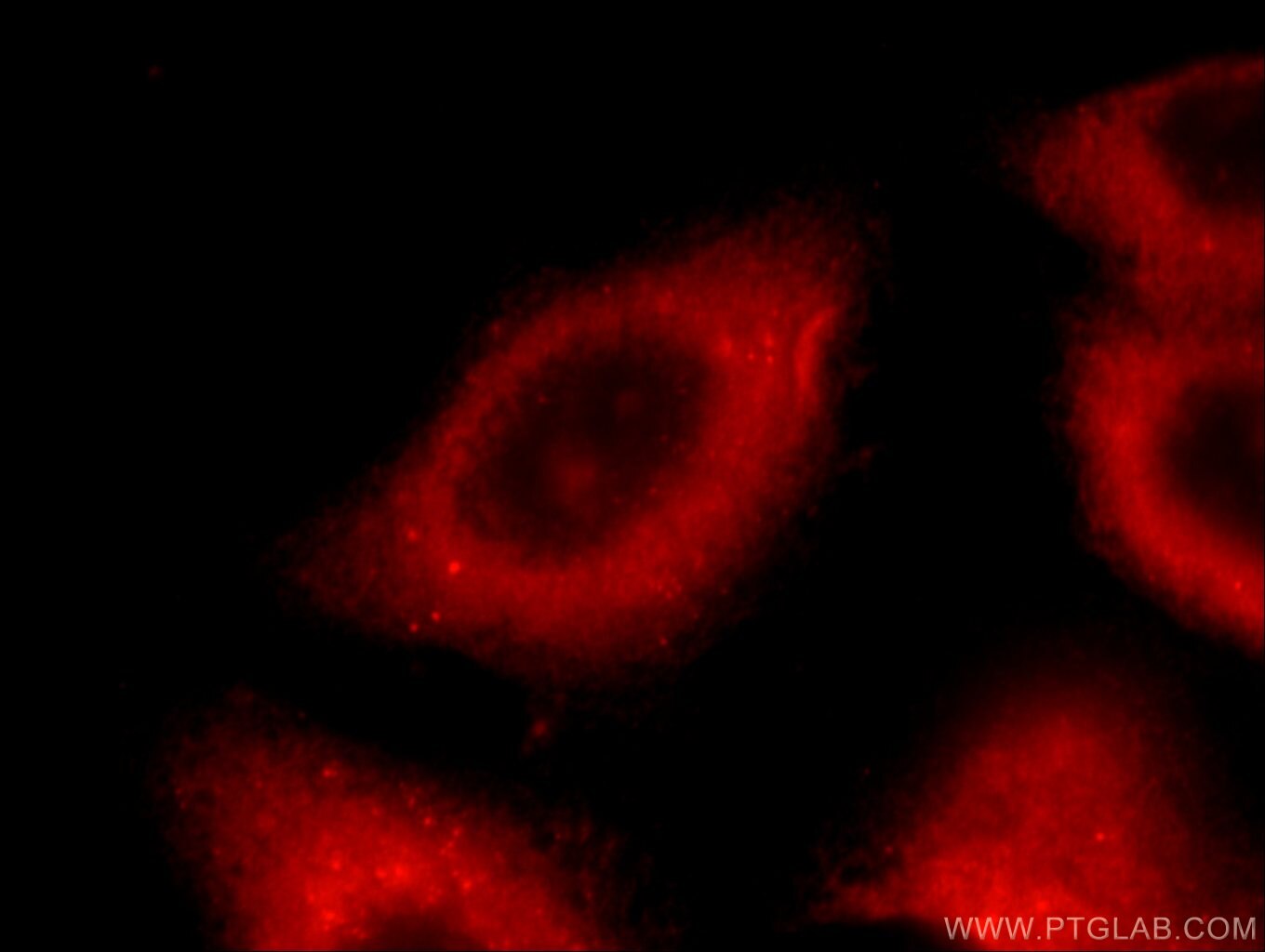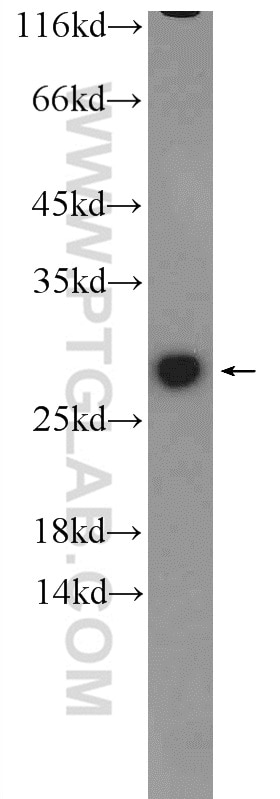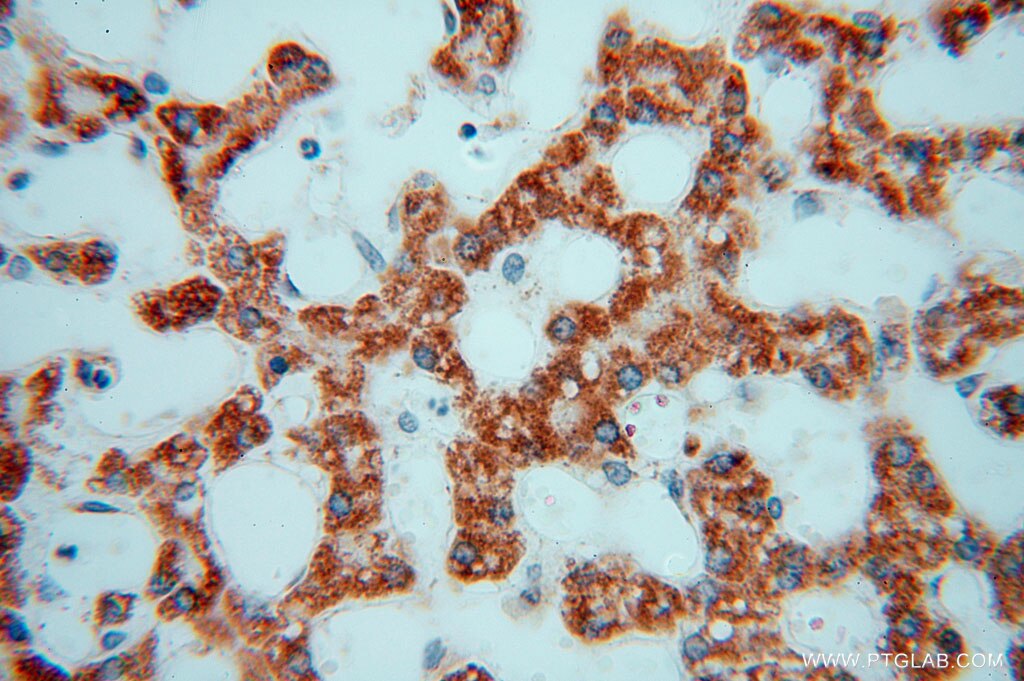- Featured Product
- KD/KO Validated
NQO1 Polyklonaler Antikörper
NQO1 Polyklonal Antikörper für WB, IHC, IF/ICC, FC (Intra), IP, ELISA
Wirt / Isotyp
Kaninchen / IgG
Getestete Reaktivität
human und mehr (5)
Anwendung
WB, IHC, IF/ICC, FC (Intra), IP, ELISA
Konjugation
Unkonjugiert
Kat-Nr. : 11451-1-AP
Synonyme
Galerie der Validierungsdaten
Geprüfte Anwendungen
| Erfolgreiche Detektion in WB | HepG2-Zellen, K-562-Zellen, LNCaP-Zellen, MCF-7-Zellen, NIH/3T3-Zellen |
| Erfolgreiche IP | HepG2-Zellen |
| Erfolgreiche Detektion in IHC | humanes Kolonkarzinomgewebe Hinweis: Antigendemaskierung mit TE-Puffer pH 9,0 empfohlen. (*) Wahlweise kann die Antigendemaskierung auch mit Citratpuffer pH 6,0 erfolgen. |
| Erfolgreiche Detektion in IF/ICC | HepG2-Zellen |
| Erfolgreiche Detektion in FC (Intra) | MCF-7-Zellen |
Empfohlene Verdünnung
| Anwendung | Verdünnung |
|---|---|
| Western Blot (WB) | WB : 1:1000-1:8000 |
| Immunpräzipitation (IP) | IP : 0.5-4.0 ug for 1.0-3.0 mg of total protein lysate |
| Immunhistochemie (IHC) | IHC : 1:50-1:500 |
| Immunfluoreszenz (IF)/ICC | IF/ICC : 1:50-1:500 |
| Durchflusszytometrie (FC) (INTRA) | FC (INTRA) : 0.20 ug per 10^6 cells in a 100 µl suspension |
| It is recommended that this reagent should be titrated in each testing system to obtain optimal results. | |
| Sample-dependent, check data in validation data gallery | |
Veröffentlichte Anwendungen
| KD/KO | See 4 publications below |
| WB | See 315 publications below |
| IHC | See 24 publications below |
| IF | See 13 publications below |
| IP | See 1 publications below |
Produktinformation
11451-1-AP bindet in WB, IHC, IF/ICC, FC (Intra), IP, ELISA NQO1 und zeigt Reaktivität mit human
| Getestete Reaktivität | human |
| In Publikationen genannte Reaktivität | human, Hausschwein, Huhn, Kaninchen, Rind, Ziege |
| Wirt / Isotyp | Kaninchen / IgG |
| Klonalität | Polyklonal |
| Typ | Antikörper |
| Immunogen | NQO1 fusion protein Ag2009 |
| Vollständiger Name | NAD(P)H dehydrogenase, quinone 1 |
| Berechnetes Molekulargewicht | 274 aa, 31 kDa |
| Beobachtetes Molekulargewicht | 31 kDa |
| GenBank-Zugangsnummer | BC007659 |
| Gene symbol | NQO1 |
| Gene ID (NCBI) | 1728 |
| Konjugation | Unkonjugiert |
| Form | Liquid |
| Reinigungsmethode | Antigen-Affinitätsreinigung |
| Lagerungspuffer | PBS mit 0.02% Natriumazid und 50% Glycerin pH 7.3. |
| Lagerungsbedingungen | Bei -20°C lagern. Nach dem Versand ein Jahr lang stabil Aliquotieren ist bei -20oC Lagerung nicht notwendig. 20ul Größen enthalten 0,1% BSA. |
Hintergrundinformationen
NQO1, also named as DIA4, NMOR1, DTD and QR1, belongs to the NAD(P)H dehydrogenase (quinone) family. This enzyme apparently serves as a quinone reductase in connection with conjugation reactions of hydroquinons involved in detoxification pathways as well as in biosynthetic processes such as the vitamin K-dependent gamma-carboxylation of glutamate residues in prothrombin synthesis. It is known to be involved in benzene metabolism. In human studies of ozone exposure, polymorphisms in oxidative stress genes (NQO1, GSTM1, GSTP1) modify respiratory symptoms, lung function, biomarkers and risk of asthma. (PMID:18511640; 18848868 ) This antibody recognizes all the three isoforms (26-27 kDa and 31 kDa) of NQO1 and the homo-dimer form (66-70 kDa) of NQO1.
Protokolle
| Produktspezifische Protokolle | |
|---|---|
| WB protocol for NQO1 antibody 11451-1-AP | Protokoll herunterladen |
| IHC protocol for NQO1 antibody 11451-1-AP | Protokoll herunterladen |
| IF protocol for NQO1 antibody 11451-1-AP | Protokoll herunterladen |
| IP protocol for NQO1 antibody 11451-1-AP | Protokoll herunterladen |
| Standard-Protokolle | |
|---|---|
| Klicken Sie hier, um unsere Standardprotokolle anzuzeigen |
Publikationen
| Species | Application | Title |
|---|---|---|
Nature The CoQ oxidoreductase FSP1 acts parallel to GPX4 to inhibit ferroptosis.
| ||
Sci Transl Med Activation of NRF2 ameliorates oxidative stress and cystogenesis in autosomal dominant polycystic kidney disease. | ||
Nat Commun Microglia clear neuron-released α-synuclein via selective autophagy and prevent neurodegeneration. | ||
Nat Commun Cordycepin prevents radiation ulcer by inhibiting cell senescence via NRF2 and AMPK in rodents. | ||
Microbiome Antioxidant potential of Pediococcus pentosaceus strains from the sow milk bacterial collection in weaned piglets. |
